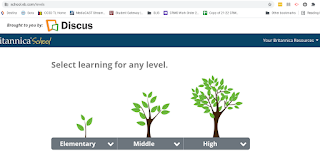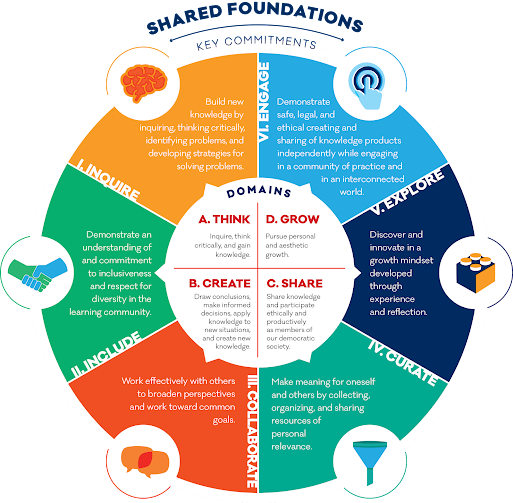Britannica Online School Edition: Enhancing Student Research Capabilities with Adaptive Technology
Britannica Online is a database of encyclopedia articles on a wide array of topics, compiled for use by k-12 students. Users may search for articles, videos, images and other resources to enhance their learning, and explore hundreds of thousands of digital articles replete with vetted, trustworthy information. Britannica Online offers learners and educators access to quality research resources and improves teaching and learning outcomes inclusively and equitably through the use of curated, customizable features and functions.
In South Carolina, Britannica Online access has been granted to public school k-12 students across the state. Learners and educators may navigate to the database from their school or library website, or through MackinVIA, a digital resource management system, but should also be able to sign in by navigating directly to https://school.ebonline.com/. Students then have the option to select Elementary, Middle, or High School level access to begin their research. Britannica School Elementary offers a colorful, vibrant interface and Britannica Fundamentals to aid and appeal to younger students. Middle level access presents middle-grade students with a word of the day, specially selected "At a Glance" articles, and primary source documents and resources to bolster student research capabilities. College preparation and career readiness inform the High Level Britannica features and functions to support students nearing graduation with whatever their individual goals may be.
Britannica has made accessibility a top priority, and offers accommodations, modifications, and adaptive and accessibility features built in to the database in order to serve a broad range of student needs and ability levels. Though it was not curated specifically to serve as an accessibility tool, understanding these features can assist students from many diverse backgounds in conducting effective research and improving learner outcomes. Of their own mission, Britannica asserts "We are passionate about igniting curiosity and spreading the joy of discovery to learners by bringing high-quality, reliable, and accessible learning resources to people all over the world" (Britannica School, 2020, The Britannica Vision).
When learners explore Britannica resources, they are provided with three differentiated levels at which to read subject articles. Level 1 articles are geared toward early learners, with levels 2 and 3 incorporating language and information that appeal to and challenge researchers as they master more complex concepts and research skills. Every article in the database can be modified to any level, ensuring that seasoned student researchers and novice learners alike may interact with and learn from Britannica's resources. Articles are accompanied by related images and videos that provide even more information on the topic at hand, helping students to see visual evidence and examples of their subject matter and round out the learning experience.
There are selection tools and features available for each article to empower students to make the most of their Britannica School use. The plus and minus tools to the right allow readers to increase or decrease font sizes as needed for comfortable reading. Students can save articles to their Google Drives by using the left-most arrow button for easy reference and distributing to study groups or classmates. Britannica's built-in citation tool offers students bibliographic information for each article in MLA, APA, Harvard, and Chicago Manual of Style formats. Britannica's Read Aloud tool serves users who wish to hear the content of the online article read aloud directly from the site, where they can still follow along with the printed text or engage with content regardless of literacy levels.
Articles are also available to English-language learners in more than 80 different languages. If a user wishes to view an article in English, the double-click dictionary empowers her to see the definition of any word at the double-click of a cursor! Alternately, if she prefers to read the article in another language, she may still view the original text in English by hovering over it, bolstering vocabulary mastery and affording her even more autonomy over the learning process.
Another useful feature of Britannica for educators is a database of searchable curriculum standards, which can be filtered by state, subject area, and grade level. Search results include Britannica articles that correspond to the selected criteria, and links to suggested lesson plans that tie into curriculum standards to support classroom teachers in serving their students.
For more testimonial and tutorial videos on how educators and students can benefit from Britannica Online School's suite of accessible, adaptive services, take a look at the resources below. How have you found Britannica School beneficial in your school?
“Britannica School " Britannica.” Britannica, 31 Jan. 2022, britannicalearn.com/britannica-school/
“Britannica Provides Digital Resources to More than 18 Million Students.” PRWeb, 7 May 2020, www.prweb.com/releases/britannica_provides_digital_resources_to_more_than_18_million_students_across_south_and_central_america_amid_covid_19_school_shutdowns/prweb17105383.htm#!
“Diversity, Equity, and Inclusion " Britannica.” Britannica, 26 Oct. 2021, britannicalearn.com/diversity/






Britannica is such an awesome resource! I would love to incorporate it into my classroom more. A lot of older classes use it a lot!
ReplyDeleteKarly Carter